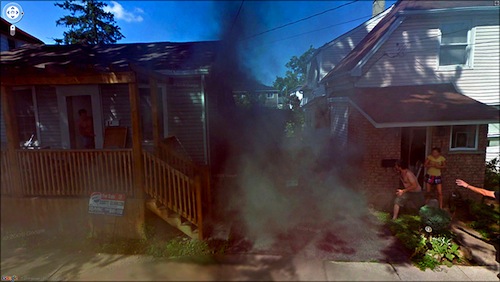
Image Credit: Google
I had ten minutes to kill yesterday afternoon, and I spent them clicking around on The Guardian’s website. And while I was thinking about posting on something else today, this weird collection of images came across my screen and I thought it’d be fun to put them up. They’re a collection of images amassed by Jon Rafman of people and animals doing funny and/or stupid things when the Google Maps Street View van drove by. Some of them are really quite entertaining, and I encourage you to take a look if you haven’t seen them already. Most of the images have correct corresponding addresses and can be found in Google Earth Street View, which confirms for the weary that these things actually happened. Some of the addresses are ambiguous (e.g., “Victoria Highway, Gregory, Australia”) and it’s hard to find their corresponding images on Google Maps, which is a shame. Sometimes you wish you could move up and down a given location and discern how a given scene developed. In addition to the selections that can be found on The Guardian’s website, even more can be found on Rafman’s website here.
Recent comments
2 years 29 weeks ago
2 years 44 weeks ago
2 years 44 weeks ago
2 years 50 weeks ago
3 years 4 weeks ago
3 years 4 weeks ago
3 years 4 weeks ago
3 years 6 weeks ago
3 years 6 weeks ago
3 years 6 weeks ago